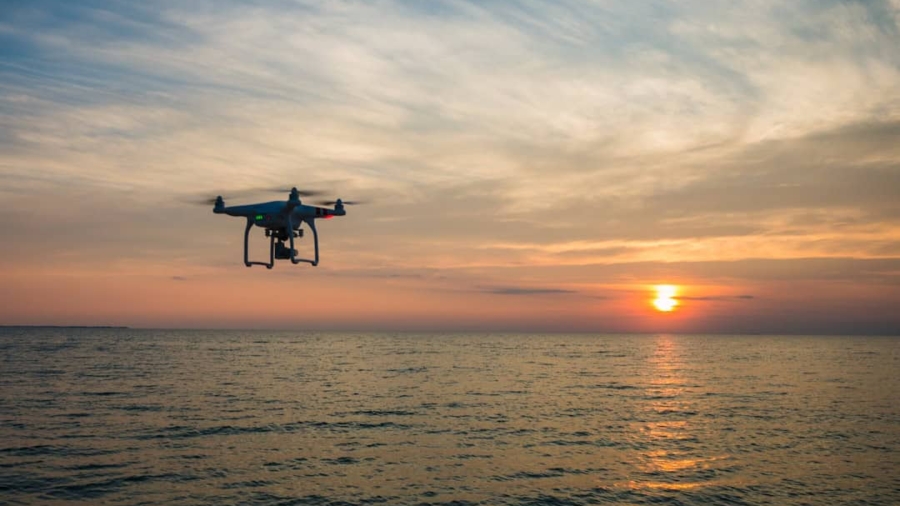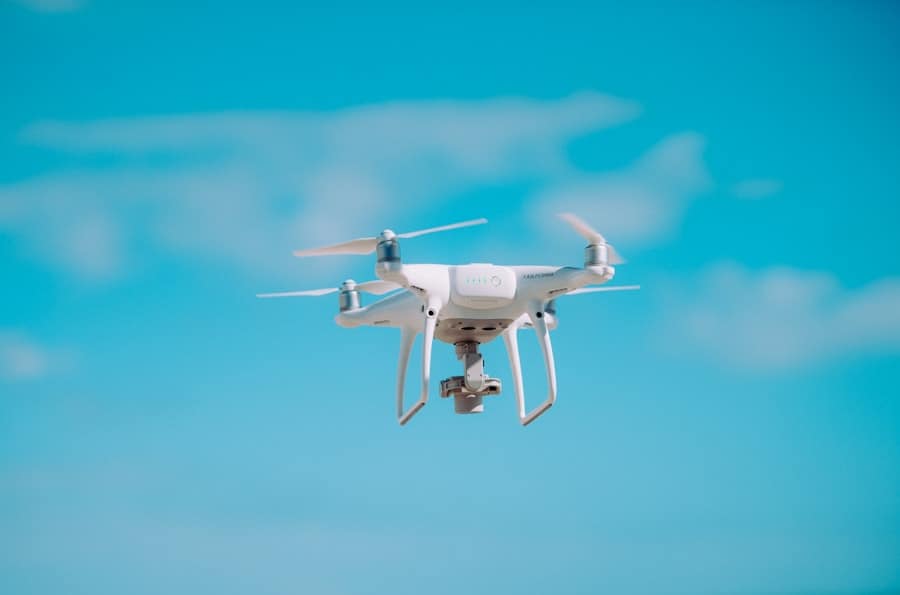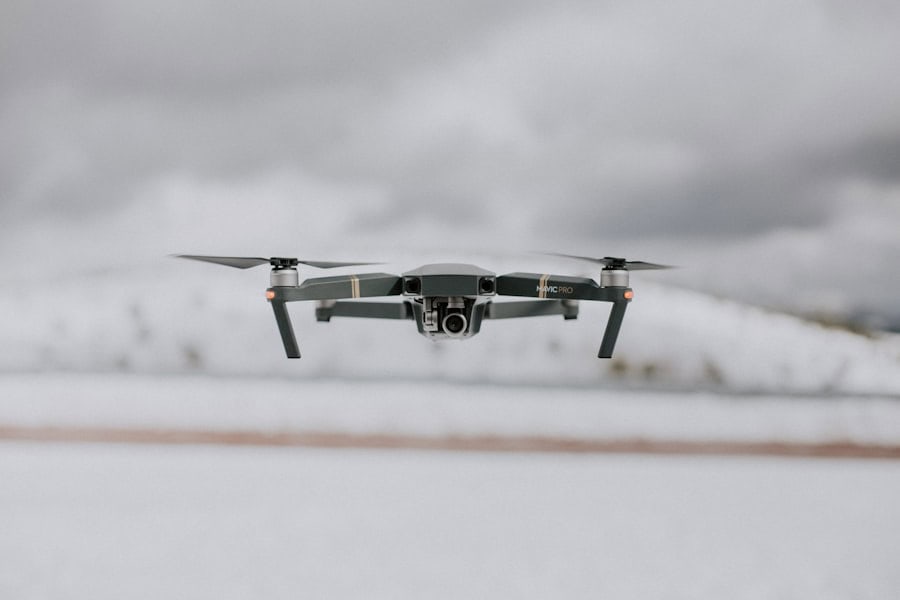The advent of drone technology has revolutionized various industries, from agriculture to filmmaking, but perhaps one of the most exciting applications lies in the realm of travel. Lightweight drone designs have emerged as a game-changer for travelers seeking to capture breathtaking aerial views and document their adventures from unique perspectives. These drones, typically weighing less than 250 grams, are engineered for portability without compromising on performance.
Their compact size and reduced weight make them ideal companions for globetrotters who wish to explore new landscapes while documenting their journeys. The evolution of drone technology has led to significant advancements in lightweight designs, making them more accessible and user-friendly. Manufacturers have focused on creating drones that are not only easy to transport but also equipped with high-quality cameras and intelligent flight features.
This combination allows travelers to effortlessly capture stunning imagery and videos, enhancing their travel experiences. As the demand for lightweight drones continues to grow, it is essential to understand the benefits they offer, the features to consider when selecting one, and how they can be integrated into a traveler’s toolkit.
Key Takeaways
- Lightweight drone designs are becoming increasingly popular for travelers due to their portability and ease of use.
- Travelers can benefit from lightweight drone designs by capturing stunning aerial footage and photos of their adventures.
- When looking for a lightweight drone, travelers should consider features such as compact size, foldable arms, and long battery life.
- To choose the right lightweight drone for travel, consider factors such as camera quality, flight time, and ease of control.
- Lightweight drone designs enhance portability by being easy to carry, quick to set up, and capable of capturing high-quality aerial footage on the go.
Benefits of Lightweight Drone Designs for Travelers
One of the primary advantages of lightweight drone designs is their portability. Weighing significantly less than traditional drones, these models can easily fit into a backpack or even a large pocket, making them an ideal choice for travelers who prioritize convenience. This portability means that adventurers can take their drones on hikes, beach trips, or city explorations without the burden of carrying heavy equipment.
The ease of transport encourages spontaneous photography opportunities, allowing travelers to capture moments that might otherwise be missed. In addition to portability, lightweight drones often come equipped with advanced stabilization technology and high-resolution cameras. This means that even in challenging conditions—such as windy environments or uneven terrain—travelers can still achieve smooth, professional-quality footage.
The ability to shoot in 4K resolution or higher has become standard in many lightweight models, enabling users to create stunning visual narratives of their journeys. Furthermore, many lightweight drones feature automated flight modes, such as follow-me or waypoint navigation, which allow travelers to focus on enjoying their surroundings while the drone captures the action.
Features to Look for in Lightweight Drone Designs
When selecting a lightweight drone for travel, several key features should be considered to ensure it meets the specific needs of the user. First and foremost is camera quality; a drone equipped with a high-resolution camera will provide superior image quality and detail. Look for drones that offer at least 12 megapixels for still images and 4K video capabilities.
Additionally, features such as a gimbal stabilization system can significantly enhance video quality by reducing shakiness during flight. Another important feature is battery life. Lightweight drones typically have shorter flight times due to their smaller batteries; however, some models are designed with efficiency in mind, offering flight times of up to 30 minutes on a single charge.
It is advisable to choose a drone that allows for easy battery replacement or offers the option to purchase additional batteries for extended use during travel. Furthermore, consider the range of the drone’s remote control; a longer range allows for more flexibility in capturing shots from various distances.
Tips for Choosing the Right Lightweight Drone for Travel
Choosing the right lightweight drone involves assessing personal needs and preferences. First, consider the primary purpose of the drone: is it for photography, videography, or simply for fun? If capturing high-quality images is a priority, investing in a model with advanced camera features and editing capabilities may be worthwhile.
Conversely, if the goal is casual exploration and fun flying experiences, a more basic model may suffice.
Many lightweight drones come with user-friendly interfaces and smartphone integration, allowing users to control the drone through an app.
This feature can be particularly beneficial for novice pilots who may feel intimidated by complex controls. Additionally, look for drones with built-in tutorials or beginner modes that help users learn how to fly safely and effectively. Finally, consider the durability of the drone; lightweight materials should still provide resilience against minor crashes or rough handling during travel.
How Lightweight Drone Designs Enhance Portability
The design philosophy behind lightweight drones emphasizes portability without sacrificing functionality. Many models are foldable or compact in design, allowing them to be easily stowed away in carry-on luggage or backpacks. This feature is particularly advantageous for travelers who may need to navigate crowded airports or public transportation systems where space is limited.
The ability to quickly pack and unpack a drone can make a significant difference in the overall travel experience. Moreover, lightweight drones often come with protective cases or bags designed specifically for travel. These accessories not only safeguard the drone during transit but also provide compartments for extra batteries, propellers, and other essential accessories.
This organization ensures that everything needed for a successful flying experience is readily available without rummaging through bags. The combination of compact design and protective storage solutions makes lightweight drones an appealing option for those who wish to document their travels without the hassle of cumbersome equipment.
Case Studies: Travelers Using Lightweight Drone Designs
Numerous travelers have embraced lightweight drone designs to enhance their adventures and capture unforgettable moments from above. For instance, a travel blogger exploring the picturesque landscapes of Iceland utilized a lightweight drone to document her journey through stunning waterfalls and volcanic terrains. The drone’s ability to capture sweeping aerial shots allowed her audience to experience the grandeur of Iceland’s natural beauty in ways that traditional photography could not achieve.
Similarly, a group of adventure enthusiasts hiking through the Swiss Alps found that their lightweight drones provided an exhilarating way to document their trek. With the drones’ follow-me mode activated, they were able to capture dynamic footage of each other navigating challenging trails against breathtaking backdrops. The resulting videos not only served as personal mementos but also inspired others to explore similar adventures.
These case studies illustrate how lightweight drones can transform travel experiences by providing unique perspectives and enhancing storytelling through visual media.
Maintenance and Care for Lightweight Drone Designs
Proper maintenance and care are crucial for ensuring the longevity and performance of lightweight drones. Regularly inspecting the drone before and after flights can help identify any potential issues that may arise from wear and tear or environmental factors. Checking propellers for damage, ensuring battery connections are secure, and cleaning the camera lens are all essential steps in maintaining optimal performance.
Additionally, storing the drone correctly when not in use is vital. Keeping it in a protective case can prevent accidental damage during transport or storage. It is also advisable to keep batteries charged according to manufacturer guidelines; lithium polymer batteries used in drones can degrade if left uncharged for extended periods.
Following these maintenance practices not only prolongs the life of the drone but also ensures that it performs reliably during critical moments when capturing those once-in-a-lifetime shots.
The Future of Lightweight Drone Designs for Travelers
As technology continues to advance, the future of lightweight drone designs looks promising for travelers seeking innovative ways to document their journeys. With ongoing improvements in battery life, camera quality, and user-friendly features, these drones are becoming increasingly sophisticated while remaining accessible to a broader audience. The integration of artificial intelligence and machine learning into drone technology may further enhance capabilities such as obstacle avoidance and automated flight planning.
Moreover, as regulations surrounding drone usage evolve globally, travelers will likely find it easier to operate these devices in various locations without facing significant legal hurdles. This shift could lead to an increase in responsible drone usage among travelers who wish to capture their experiences while respecting local laws and environments. Ultimately, lightweight drone designs are poised to become indispensable tools for modern explorers eager to share their adventures from new heights.
For travelers looking to stay ahead of the latest trends in technology, a related article worth checking out is What Trends Are Predicted for 2023. This article explores the upcoming advancements in various industries, including the field of drone technology. By staying informed about the latest trends, travelers can ensure they are equipped with the most cutting-edge tools for their adventures.
FAQs
What are lightweight drone designs?
Lightweight drone designs refer to the construction of drones using lightweight materials such as carbon fiber, aluminum, or high-grade plastics to reduce overall weight without sacrificing performance or durability.
How do lightweight drone designs improve portability for travelers?
Lightweight drone designs make it easier for travelers to carry drones with them during their journeys. The reduced weight makes it more convenient to pack and transport the drone, whether in a backpack, carry-on luggage, or camera bag.
What are the benefits of using lightweight drones for travel?
Using lightweight drones for travel offers several benefits, including easier transportation, reduced strain on the traveler, and the ability to carry additional gear or equipment without exceeding weight limits.
Are lightweight drones as durable as heavier models?
Many lightweight drone designs are engineered to be just as durable as their heavier counterparts, utilizing advanced materials and construction techniques to maintain strength and resilience while minimizing weight.
Can lightweight drones still offer advanced features and capabilities?
Yes, lightweight drones can still offer advanced features and capabilities, including high-resolution cameras, long battery life, obstacle avoidance systems, and intelligent flight modes. Manufacturers are continually improving lightweight drone technology to provide a full range of functionalities.



